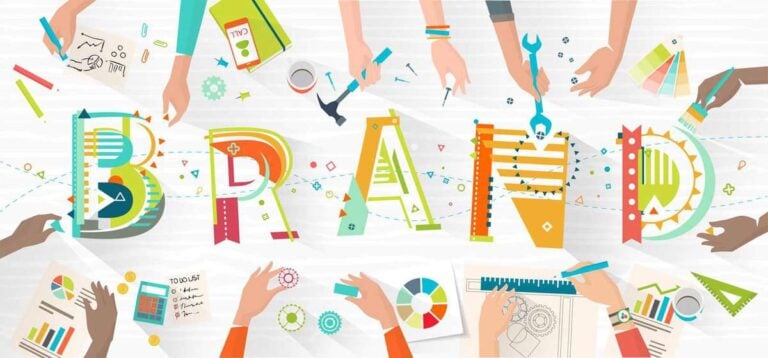Creating a killer brand for yourself is probably the toughest creative assignment you’ll face during your career. Unlike a neatly packaged brief from your client, your own branding can be a more chaotic project that leads you down many concepts before finalising that design.
And where your strict rules and processes usually fit, instead they’ve gone completely out the window, taking weeks or sometimes even months before a decision is made.
The trouble is, as a creative by trade you know the importance of good branding.
Communicating a businesses philosophy, and generating a relationship with customers and clients, branding is the key to business success. It conveys meaning and promises to an audience with a limited attention span, and can become an asset that represents trust.
But when it comes to your own branding you may feel unsure of how to proceed or the message you’d like to get across.
There’s no magic recipe, but there are certainly a few things you should consider.
What’s in a name
A common pitfall made by many freelance designers is to brand themselves under their own name.
Admittedly this may often be the rushed decision of someone who couldn’t wait to start up on their own, but what happens when you want to grow?
Whilst using your own name can make your company feel more personal, this can cause a brand to look dated later on down the line.
And if there’s one thing we know in the creative industry, logos may change but names don’t.
Choosing a name is never easy, but once you’ve found it you will feel ready to move forward with your branding and it will all begin to fit into place.
Start by noting down the services you do, what your particular USP is and the beliefs you have about your industry. A word may just pop into your head that ties everything together.
Ben Harper Found of Datify explains, “We used a batch of words that related to our core concept, bulked these out with a thesaurus, and then set about combining words to make something interesting that would hopefully stand out”.
Own the URL
As you’re considering names don’t forget to check if you can own the full URL.
There’s nothing more infuriating then finally having the name, to find that the URL has been taken.
It’s a small but very crucial part of your business, so ensure that you can have the full name along with a strong URL such as a .co.uk or a .com.
However, don’t see this as an opportunity to go back to the drawing board. Many brands have seen this as an opportunity to be clever about their URL and help them achieve better SEO.
B&Q are the best example of this as their URL is diy.com, whilst clever and easy to remember when marketing on television or through the radio, this may not work for other niches. You only need to read this article on unintentionally inappropriate domain names, to know that you should air on the side of caution and keep yourself as branded as possible.
It’s more than just a logo
Customers and clients alike will develop an instant first impression about your business based on your logo so it’s essential to get it right.
Logo’s have become the voice of many brands, just think about the giants out there such as Apple, Google, and even Coca Cola, you only need to see their logo to know who they are, what they do, and if you’re real design nerd, their strapline.
With the advances in technology in design, typefaces and colour palettes have become more complex than ever, but it’s important that you choosing every element of your logo wisely.
You must always ask yourself how it’s going to look on every part of your business paraphernalia, a letter head, a website, a business card. On all shapes and sizes, it must be able to hold it’s own and become instantly recognisable.
Colour, shape, font spacing, it all matters. The psychology of logo design is one of the most oversimplified aspects behind the process of creating a logo.
Whilst circles and rounded designs of any sort tend to be viewed as feminine in nature, straight, angular shapes have been proven to resonate more with men.
“Being in a branded industry, we have noticed a number of evolutions in logo design”, comments Richard LeCount from USBMakers. “The increase of blues and greens as the world becomes more eco conscious and the simplification of logos. Brands are moving away from busy and dated images to ones with cleaner lines, less imagery and a strong focus on font”.
Brand names and brand identities are hugely important business tools.
Research has shown that the world’s most valuable brands have managed to grow their financial brand value by 168% in 10 years, compared to 21% for those who have not.
Don’t underestimate the power of your personal branding, and if it takes weeks or months to hit the nail on the head, don’t beat yourself up about it, because the time was probably worth it.

